|
Explanation: Looking
other-worldly is this fog-enshrouded shrubland. We are hiking on the
side of El Junco peak on San Cristobol Island of the Galapagos. Here
grows this beautiful but threatened shrub, the Galapagos miconia.
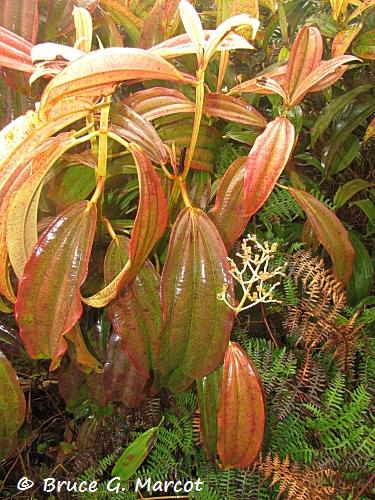
The bright, long, red leaves with parallel venation are
a distinctive feature of Galapagos miconia.
Found only on San Cristobol and Santa Cruz Islands, this locally endemic
species is a Galapagos specialty but is threatened by invasive plants,
particularly the imported quinine tree (Cinchona succirubra) on Santa
Cruz.
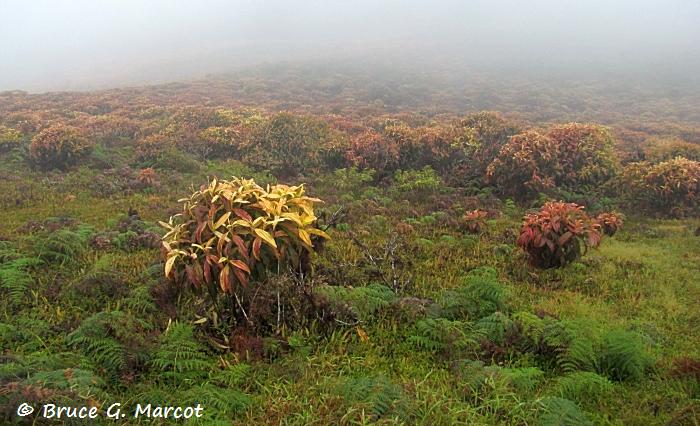
On San Cristobol Island, Galapagos miconia shares the
slopes with bracken fern, Pteridium aquilinum var. arachnoideum,
a variety endemic to the Galapagos but that is nearly
indistinguishable from other bracken varieties found
elsewhere in the world. 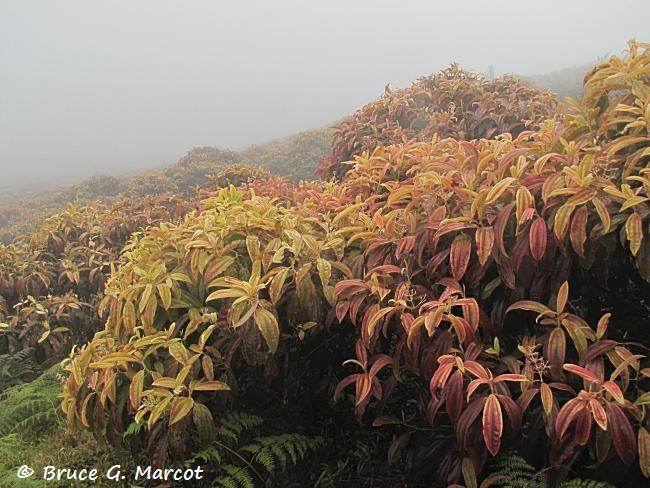
Thickets of Galapagos miconia also provide important cover
for ground-nesting Galapagos (dark-rumped) petrels, endemic seabirds of the
region,
during the rainy season.
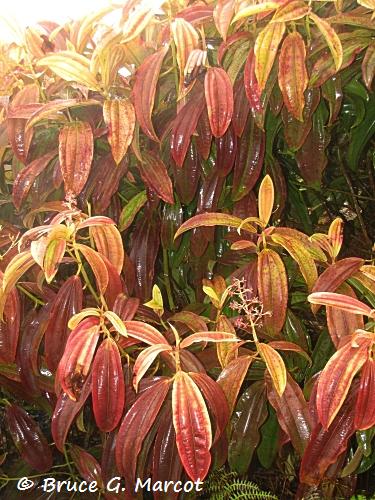
The leaves turn reddish
during periods of drought. Areas of Galapagos miconia have
been cleared for agriculture,
and are also threatened by the
invasive guava (Psidium guajava).
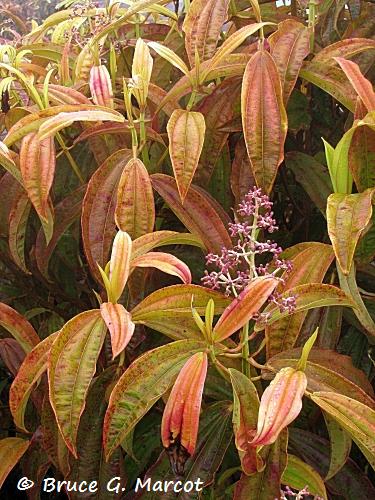
The
pink or purple flowers cluster
at the ends of the branches, and
produce small dark bluish berries.
Back in the early 2000s, the El
Junco peak area was covered by invasive blackberry vines. But this is a
conservation success story, as the local park service has eradicated the
blackberry and the miconia has returned to the slopes en force and now once
again dominates the landscape. Hooray
for valiant conservation efforts to save rare, threatened, and beautiful
inhabitants of our natural world!
|
Index |
Location | Search | About EPOW | ... Next >
Google Earth locations